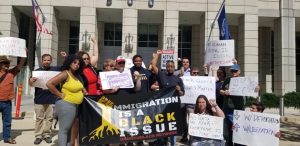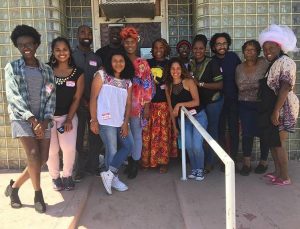The philanthropic community that supports immigrant justice has largely overlooked Black immigrant communities and organizations led by Black immigrants. In this Q&A with NCRP, Daranee Petsod, president of Grantmakers Concerned with Immigrants and Refugees (GCIR), urges funders to confront and overcome this implicit and explicit bias for greater impact.
NCRP: How would you describe philanthropy’s inclusion of and support for the Black immigrant and refugee community?
Daranee Petsod: Very limited. The experiences of Black immigrant and refugee communities are largely absent from the dialogue and strategies of both immigrant rights funders and racial equity funders. Consequently, Black-led immigrant organizations face substantial barriers in securing philanthropic support for their work.
NCRP: Why do you think that’s the case? Many foundations have adopted diversity, equity and inclusion statements and have stated their concern for racial equity – yet these fundamental gaps remain.
Daranee: Two main reasons: lack of trust and philanthropic silos.
Despite their strong connection to community, Black immigrant leaders experience an external lack of trust in their leadership from funders and others in the immigrant rights movement. Anti-Black racism – whether explicit or implicit, personal or structural – persists due to deep historical roots. In grantmaking, it shows up as concerns about organizational structure, capacity, financial management, qualifications of the leadership and expertise of staff, to name a few.
The siloed structure of philanthropy presents another barrier to funding for Black immigrant organizations. These groups, which naturally work at the intersection of race and immigration, are often told that they neither fit in the immigration portfolio nor under racial equity. Immigration funders need to deepen their understanding of the Black immigrant experience, and racial equity funders need to integrate immigration into their analysis and strategies.

Photo courtesy of UndocuBlack Network.
NCRP: How can philanthropy support pro-immigrant movements in ways that confront anti-Blackness? Have you seen any promising examples?
Daranee: Whether you fund immigration or racial equity, make an intentional effort to build relationships and trust with Black immigrant and refugee leaders. Learn about their work and issues facing their communities. Ask questions about how key immigration policies and racial equity issues affect Black immigrant communities specifically. Encourage immigration and racial equity grantees to include Black immigrant-led groups in their work. And if you’ve made a commitment to diversity, equity and inclusion, make sure to include anti-Black racism as part of your discussions.
In terms of a promising example, the Annie E. Casey Foundation comes to mind. Casey partnered with us to bring together stakeholders across issue areas affecting children: immigration, child welfare, criminal justice, etc. The convening was intentional about including Black immigrant leaders and created space to discuss anti-Blackness and exclusion, as well as implications for Black immigrant children and children of Black immigrants.

Photo courtesy of UndocuBlack Network.
NCRP: What would you say to a funder who says this conversation isn’t relevant for them because they’re “not an immigration funder” or “We don’t get political”?
Daranee: Immigration is a defining issue of our time. For funders, immigration does not have to be political, and you don’t have to be “an immigration funder” to add an immigrant and refugee lens to your grantmaking.
Immigration policies affect virtually every grantmaking area and every community across the country, both directly and indirectly. Funders cannot support effective service delivery – much less advance racial equity – without intentionally including immigrants and refugees in their funding strategy.
Immigration is central to every funder who cares about creating a cohesive, equitable and inclusive society. We are all interconnected; what oppresses one oppresses all. To disregard immigration is to amplify and perpetuate the polarization and “othering” that threaten to undermine our pluralistic democracy.
Immigration is about our shared future. Now more than ever, it is imperative that philanthropy embrace immigration as a cross-cutting issue, transcend funding silos and make long-term investments in immigrant communities.

NCRP: What is GCIR doing on this front? How can people plug in?
Daranee: We are currently working at the intersection of race and immigration on multiple fronts – from the 2020 census to narrative change, and from family separation to criminalization of immigrants and communities of color. In partnership with ABFE and other philanthropy serving organizations, we hosted a Black History Month webinar that uplifted issues facing Black immigrants, refugees and asylum seekers. We also partnered with ABFE to produce a brief capturing key points from that discussion.
We invite funders to reach out to Aryah Somers Landsberger, GCIR’s vice president of programs, to learn more about and connect with Black immigrant communities. Please also check out our new website, participate in our programs and support our mission by becoming a member.
Looking ahead to the next decade, GCIR is developing a long-term affirmative vision to guide philanthropic leadership and investment. That vision, with justice and equity as the cornerstones, will be the driving force of our future work. With immigrants, refugees and asylum seekers – including Black immigrant communities – under attack, the time is now for funders to step up.